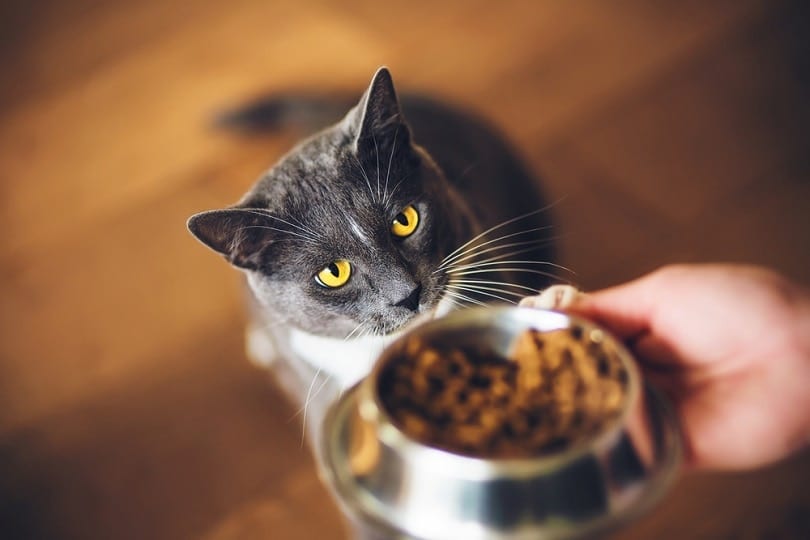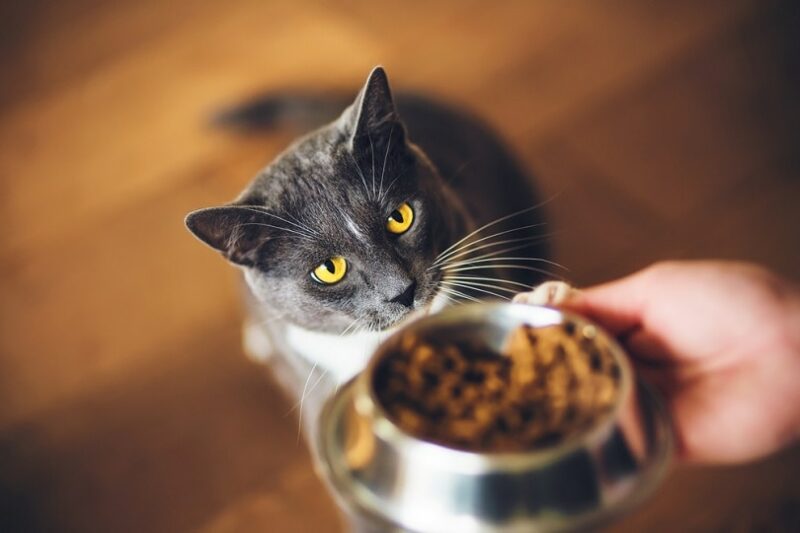Click to Skip Ahead
We’ve all been there. You’re relaxing on the couch or at your desk. Suddenly, you hear the meows. You try to ignore them because, according to the clock, it’s not quite dinner time. So, you go back to doing whatever it was you were doing. But then, the meows grow louder and more persistent. Your cat starts batting your face with its paws. And if you have anything on a table nearby? You can bet it’s getting knocked over.
Finally, you say, “Alright!” because you can’t focus.
We understand the frustration. Cats invented the word hangry. They show no mercy until their allotted kibble is in the bowl, packed to the brim. And it’s not like you’re starving your cat. So, how do you know if your cat (or any cat) is actually starving?
That’s exactly what we’re discussing in today’s post.
Important Note: If your cat’s appetite or eating habits have suddenly changed, it is essential to consult with your veterinarian. Many health conditions can alter a cat’s eating behavior. Some may cause your cat to become pickier or less eager to eat, but others can make your cat feel constantly hungry. In any of the above circumstances, your vet is the go-to person who can understand and treat your cat’s issues.
How to Tell if Your Cat Is Actually Hungry
Cats are always ready for dinner, and don’t stop telling you when the clock strikes mealtime. Typical signs that cats are ready for dinner include:
- Meowing
- Frequent trips to their food bowl
- Trying to steal food
- Pawing at your
- Rubbing
These are all classic signs of cat begging. This doesn’t mean your cat is starving. It only means your cat is running off an internal clock that says it’s time to eat.
In the wild, cats eat smaller meals multiple times throughout the day. It makes sense why house cats beg for food often—it’s only instinctual!
But sometimes, cats are not only begging for food because they feel like eating but also demanding food. After all, they are nutritionally deprived. This is an issue that is much more relevant to stray and feral cats than to house cats. However, this is always a serious issue and can cause medical problems.
The 9 Signs of a Nutritionally Deprived Cat
1. Poor Body Condition
A cat with a poor body condition score ranks between one and three. An underweight cat has visible ribs, and the belly is sunken, so you can see a pronounced abdominal tuck. The vertebrae in the spine and hip bones can also be easily seen and felt.
2. Eating Ravenously
Some cats eat quickly naturally, but a starving cat inhales food at an alarming rate. If you try to take the food away, the cat may growl, hiss, or hunch to warn you to back off.
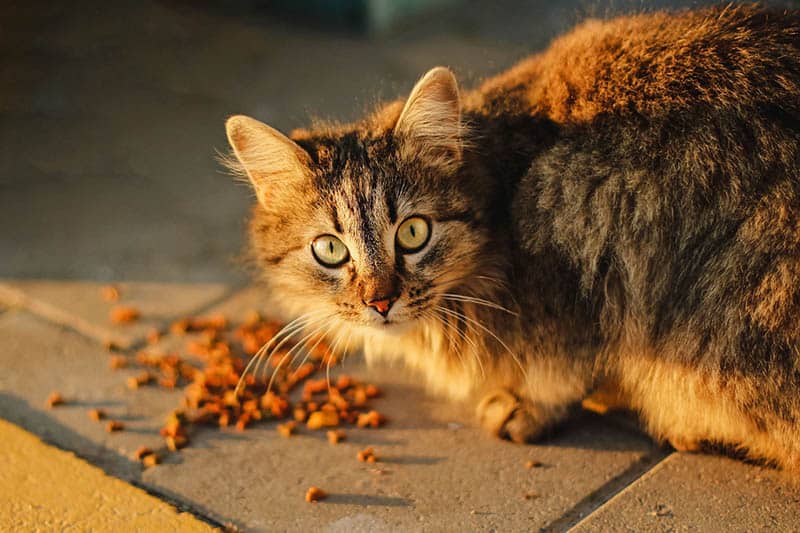
Choosing the right food and water bowls for our feline companions can pose certain challenges for pet owners. The Hepper NomNom Cat Bowl provides a chic and innovative solution that supports cat specific needs, such as shallow bowls and a subtle elevation that fosters whisker relief, posture comfort, and improves digestion. It features an elegant contemporary design with a wide wrap-around tray aimed at minimizing any messes from ending up on your floor! Furthermore, this bowl is entirely dishwasher safe, so pet owners are able to spend more time with their cats instead of cleaning up after them. Discover why the Hepper NomNom Cat Bowl is right for both you and your kitty by clicking here. At Catster, we’ve admired Hepper for many years and decided to take a controlling ownership interest so that we could benefit from the outstanding designs of this cool cat company!
3. Stealing Food
Homes with multiple cats almost always have a cat that likes to eat everyone else’s leftovers. This is normal cat behavior but should be monitored to avoid obesity.
However, a starving cat may steal other food, like the dog’s. They may get into the trash or bread loaf on the counter. The cat may even try to steal something off your plate right in front of you.
4. Regurgitating Food
Many pet owners mistake regurgitated food for vomit, but they aren’t the same. Vomit is the forceful ejection of contents found in the stomach. On the other hand, regurgitation is the passive ejection of contents found in the esophagus. Regurgitation happens immediately after eating, and the animal usually tries to eat it.
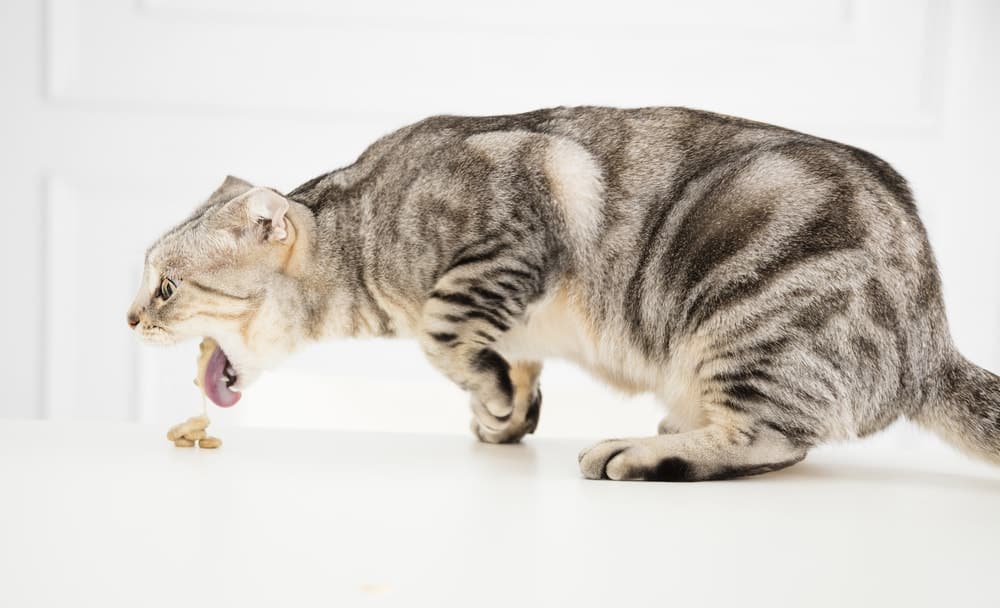
5. Eating Non-Food Items
A starving cat may try to eat non-food-related items like fabrics, plastics, cardboard, and paper. Also known as pica, this is more common in younger cats than older cats. The cause of pica is usually challenging to find; sometimes, it is due to being weaned too young or hormonal, behavioral, and infectious causes, amongst many others.
6. Diarrhea
There are plenty of reasons why cats get diarrhea. Inappropriate nutrition is one of them. Sometimes, diarrhea is a sign of malnutrition, and other times, it’s the cause. In any case, it’s always important to keep tabs on your cat’s bowel movements.
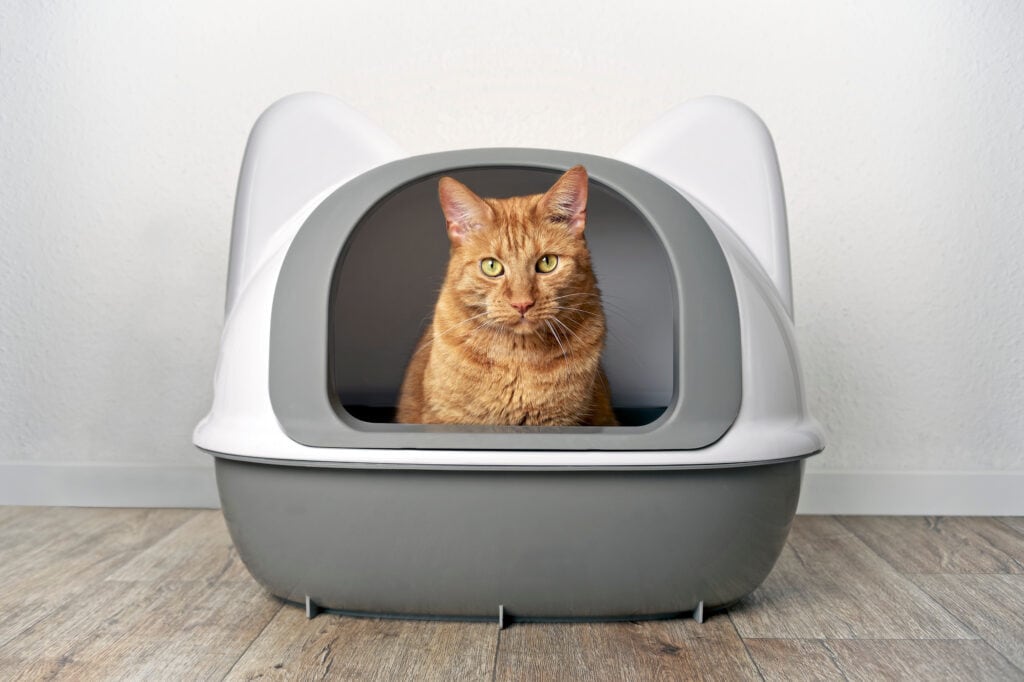
7. Lack of Energy
If you don’t eat, you don’t have energy, and a starving cat won’t have much energy to do its basic cat routines. You may see the cat sleeping more, ambling, and hardly ever running and playing. This is a survival instinct to preserve as many calories as possible.
8. Lack of Grooming
Grooming is an expected behavior for cats. In the wild, cats clean themselves after each meal to remove any food scent from their bodies. Plus, cats like to feel clean.
Grooming is a clear sign of health in a cat. A cat that doesn’t groom themself is unwell. In this case, it could be a sign of nutrition deprivation.
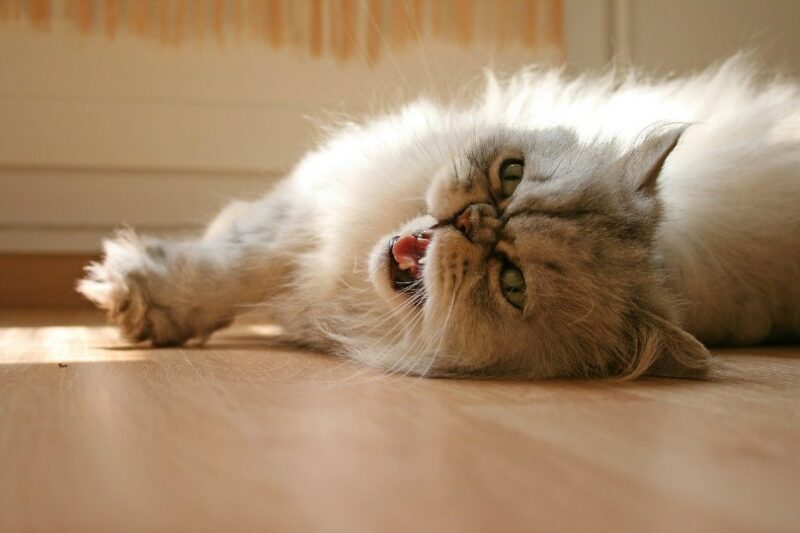
9. Manic Behavior
Manic behavior is like being “hangry” but worse. It’s hard for the cat to focus, and the cat may try to get your attention in every way possible. This isn’t like how your cat tries to get your attention to bed for its normal kibble portion. This is usually an amplified version of it.
What Happens When a Cat Doesn’t Eat?
An animal refusing to eat always warrants veterinary attention. A cat may stop eating for multiple reasons, and ultimately, your vet is the person who is trained to find this out and give your cat a solution. A cat that refuses to eat is vulnerable to problems that arise secondary to this.
Cats can experience a unique condition called hepatic lipidosis or fatty liver syndrome. Even though it is not very common, it is important to keep it in mind because it can arise when cats get longer than 3–4 days without eating. The body breaks down fat cells for energy and overwhelms the liver in the process. Overweight and obese cats are at risk.
How to Encourage Your Cat to Eat More or Gain Weight
If you suspect your cat is not eating as much as they should or your cat is not gaining weight, you should always consult with your vet. Once your vet has checked your kitty and ensured they are healthy, you can follow our tips for encouraging your cat to eat more and gain some extra ounces. Usually, cat owners ask how to help their cats burn calories. But in this case, we’re helping you put some meat on your cat’s bones.
If you are trying to “fatten up” a stray or feral cat, you can follow these pieces of advice and speak to your vet about the situation. Remember that trapping a feral cat should only be done by trained individuals. If you have found a stray cat that you can handle, taking them to a vet is always the best option if you suspect they have a health condition.
So, let’s look at ways you can add weight to your cat healthily.
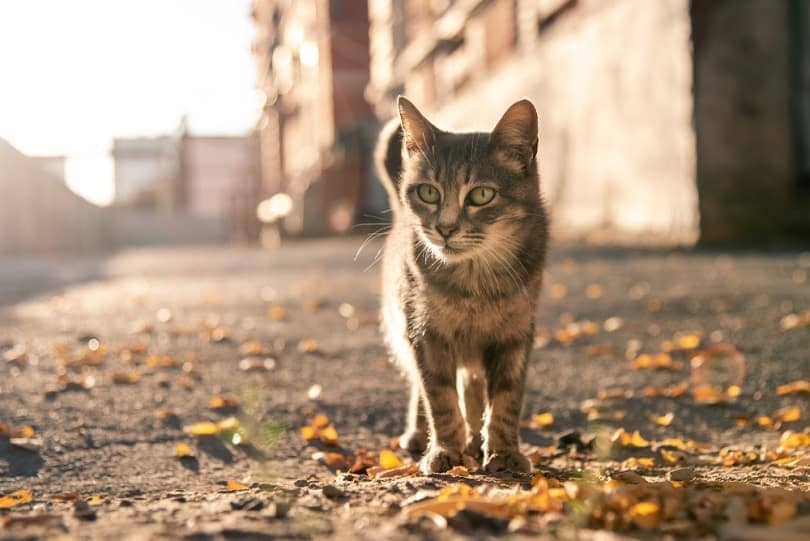
Offer Canned Kitten Food
Canned kitten food usually has a higher protein and fat content than adult cat food, making it ideal for malnourished cats. This means more essential amino and fatty acids to help with muscle development and organ function.
Offer Canned Food Over Dry Food
Canned food has more moisture, thus hydrating your cat more than dry food. Canned food generally is also higher in protein and lower in carbohydrates.
Offer Whatever Is Enticing
Even a starving cat may have their limitations. Sometimes, starving cats don’t feel well enough to eat a large amount. Try offering no-sodium chicken broth or beef broth to start. Make it warm so it feels good in the belly and mimics wild prey. Slowly add some fresh meat as you go.
Provide Many Meals Throughout the Day
Start small when offering food to a cat that isn’t used to eating large portions. Offer many small portions frequently to mimic their natural eating behavior. After some time, you can gradually add bigger portions to your cat’s meals.
Mix It Up
Offering enticing food is one thing. Try mixing it up and offer different textured foods, like boiled eggs, fresh tuna, or salt-free jerky. It’s also a great opportunity to use the treats as a reward for finishing the main meal.
Monitor for Digestive Issues
As we mentioned above, sometimes cats have medical reasons for not eating enough or for losing weight. These should be monitored, as well as allergic reactions, gas and bloating, vomiting, and diarrhea.
Final Thoughts
If you’re reading this as your cat paws at you while demanding to be fed, we’re here to tell you that it is best to get your cat to the vet and ensure there is no underlying health problem that is causing an exaggerated appetite. Cats are used to eating multiple small meals a day, so if you are providing enough food and your cat is still hungry, it may be time to assess their health and their current diet. If you want to help a stray or feral cat, start by following the tips above, and if they don’t work, speak to your vet or local shelter about the plan of action.
See also:
- Why Is My Kitten Always Hungry? 9 Vet-Approved Possible Reasons
- How to Get My Cat to Stop Begging for Food at Night: 8 Vet Approved Tips
Featured Image Credit: Valeri Vatel, Shutterstock

